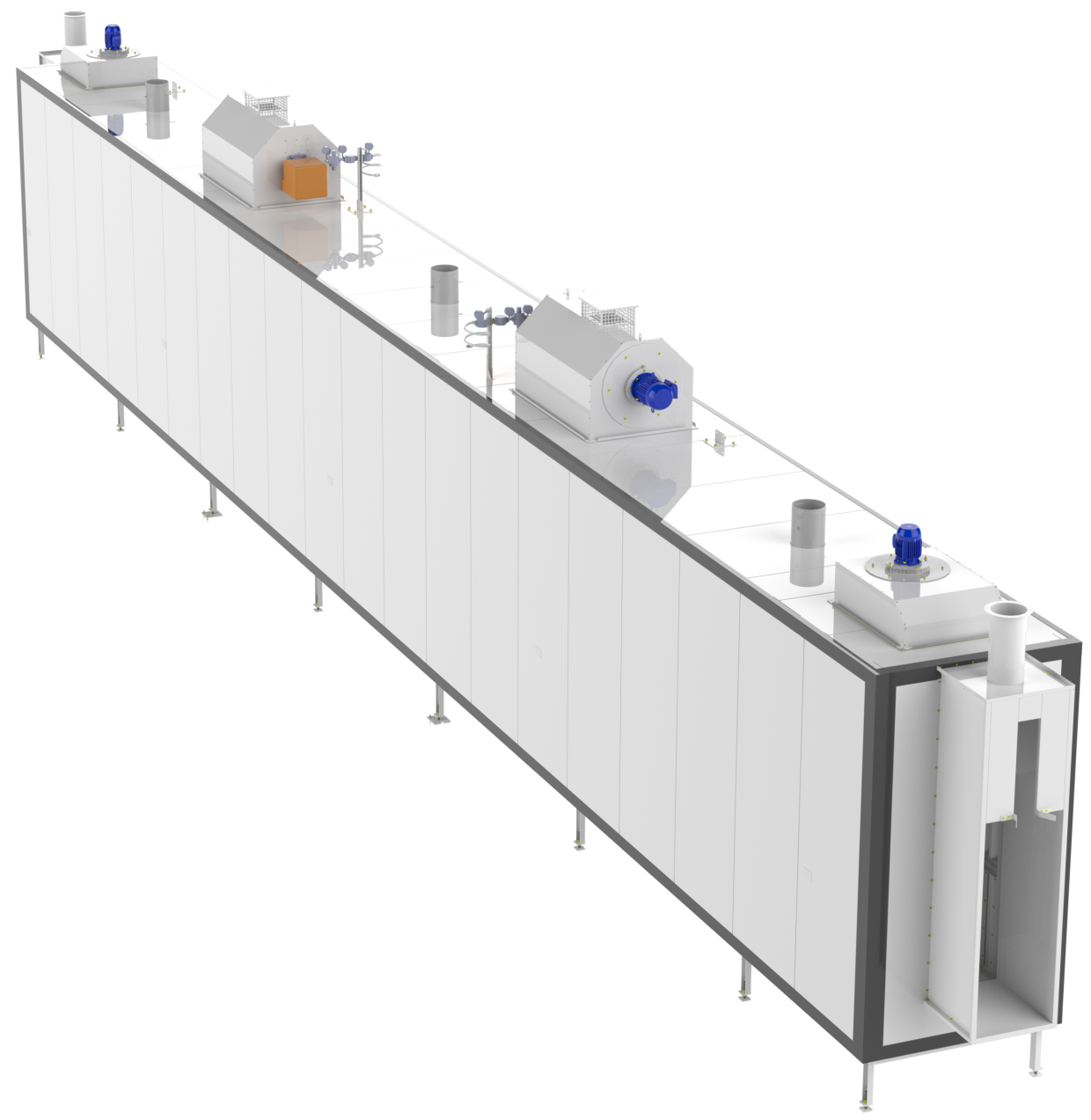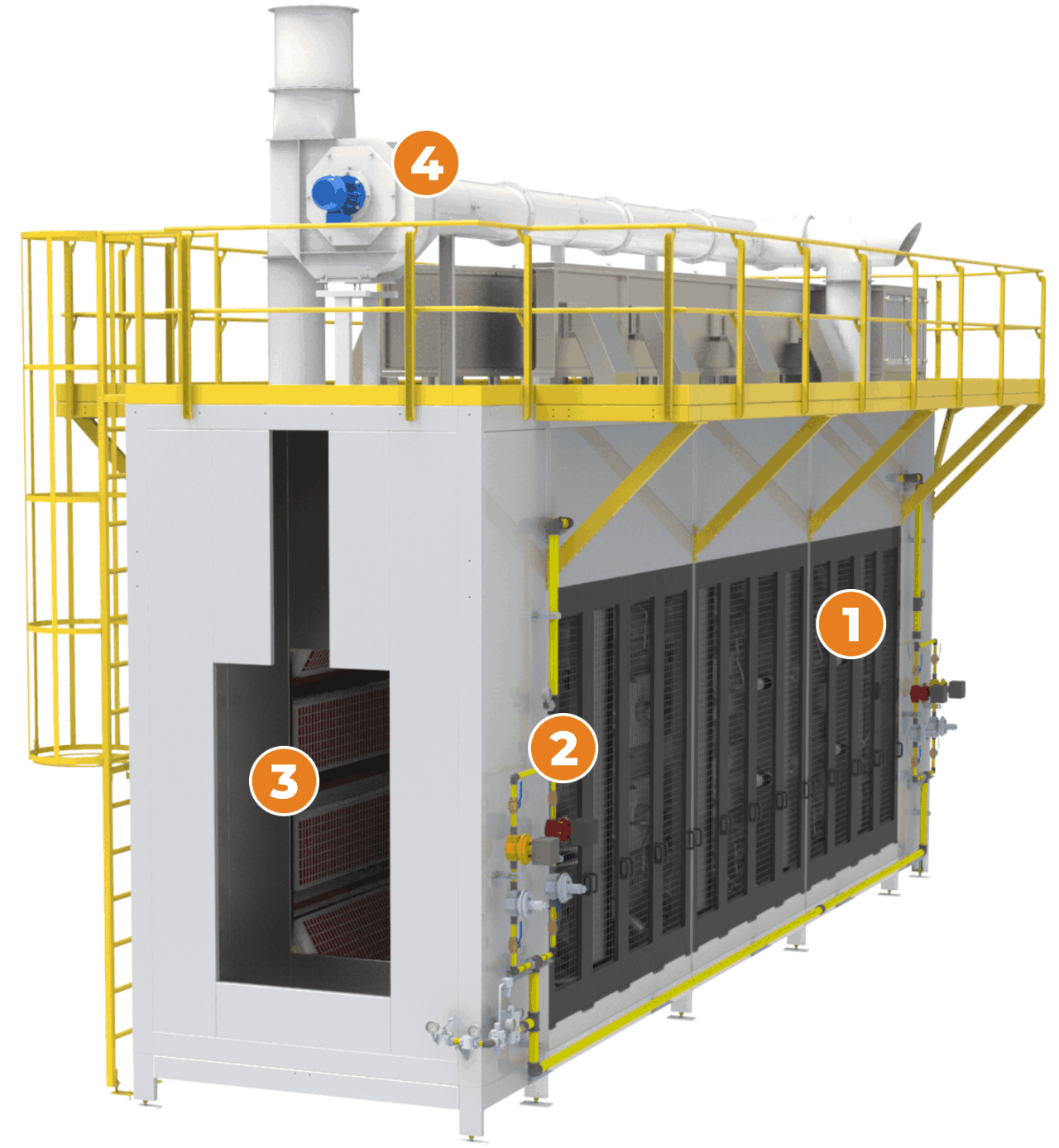OVENS FOR
INDUSTRIAL PROCESSES
Erzinger has a wide range of ovens for various industrial processes such as drying (plated parts), curing (liquid paints) or polymerization (powder paints).
The equipment is developed to the highest technological standards, guaranteeing excellent performance, low energy consumption and great temperature stability in all versions.
Gas and Eletric
Ovens
Drying ovens are used after the pre-treatment process. The concept is to speed up the drying process so that the parts can be painted.
Polymerization ovens are used after the powder coating process to polymerize the paint. The curing oven has the same principle, but for liquid paint.
![]() Heat generator
Heat generator
The heat generator has the function of promoting heating inside the oven. It can be heated by a gas burner or a bank of resistors. A ventilation system circulates the heated air inside the oven.
![]() Air Curtain
Air Curtain
They are responsible for maintaining the temperature, minimizing losses to the environment by forcing the hot air to remain inside the oven.

![]() PLC
PLC
All the oven’s temperature control takes place via a PLC, through which recipes can be recorded so that the temperature can be adjusted depending on the part going through the process.
![]() Tests / Homogeneity
Tests / Homogeneity
During development, our engineering team carries out thermography of the structure, guaranteeing the client the real efficiency of the equipment when installed, as well as homogeneity in heating.
An efficient and sustainable process
The design of the equipment can vary according to the stationary or continuous process
and the customer’s energy availability. The equipment integrates technologies based
on convection systems using electric heaters, fuel gas or radiation systems
using infrared catalytic blankets.
Industrial
Infrared
Infrared ovens transmit heat through irradiation.
Thermal irradiation is a form of heat transmission whereby a body can absorb heat waves that propagate through space in the form of electromagnetic energy, thereby increasing its temperature.
Advantages:
- Saving time, space and energy;
- Quality finish and uniform curing;
- High heat transfer efficiency from the emitter to the painted part;

![]() Resistance
Resistance
The heaters are switched on for a pre-programmed time, heating the catalytic mats to start the infrared irradiation process.
![]() Solenoid valve
Solenoid valve
The solenoid valve releases the gas through the nozzle into the catalytic plate for a pre-programmed time.
![]() Catalytic panels
Catalytic panels
It generates infrared energy efficiently, using gas as fuel. Its waves can be modulated according to the temperature of the catalytic surface.
![]() Exhaust system
Exhaust system
The exhaust fan installed on the roof of the oven will only turn on when the oven temperature reaches the temperature set in the PLC, to remove excessive heat from inside the oven.
An efficient and sustainable process
The Catalytic Panel was developed to generate infrared energy efficiently, using gas as fuel. Its waves can be modulated according to the temperature of the catalytic surface.
Catalytic panels emit a range of electromagnetic waves whose length is perfectly absorbed by most organic products. In the case of powder coatings, for example, infrared energy is absorbed perfectly during the catalytic polymerization phase, while in conventional paint treatments the wavelength allows water and solvents to evaporate quickly, guaranteeing a smooth, high-quality coating without generating thermal stresses in the substrate.

